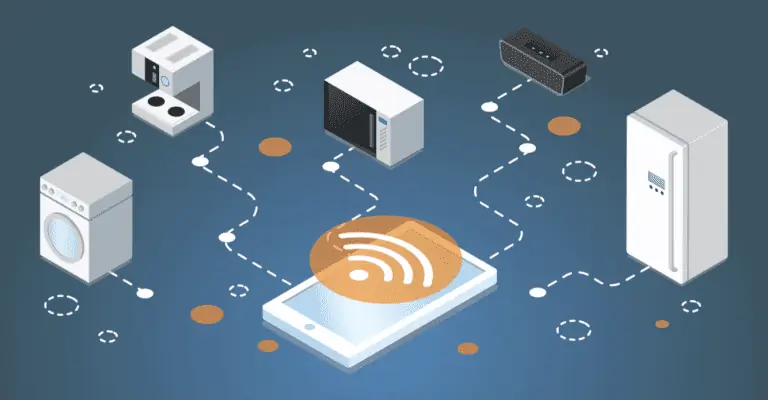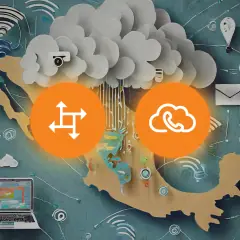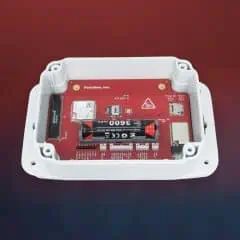Watch this video to see a demo, and to learn how our self-care portal can help you easily add IoT services to your product portfolio.

Unlike most existing solutions, this portal is designed for small and medium businesses and private customers rather than big enterprises. “One size made for enterprises” no longer fits: this tool allows you to differentiate from your competitors by targeting smaller customers – all those groups that have been left unnoticed by the large operators. We consulted with a range of IoT and M2M service providers to ensure our tool meets the challenges of real businesses – just like the ones you serve. It’s simple and user-friendly, and, thanks to the agile approach, it can evolve and be customized to suit the future needs of any IoT service provider.
Video transcript
Oleg: Hello everyone, my name is Oleg Shevtsov and today with me is Dmytro Lavraniuk. Our main topic and the purpose of this video is sharing knowledge about what we’ve learned about the IoT market and the industry over the last six months, and what the opportunities are for PortaOne customers.
Dmytro: As we all know, the buzzword “IoT” started taking physical shape as there are billions of different ideas for smart devices, and different verticals as a result emerge around smart meters, smart cities, cars, and various application domains like education, emergency, security, and whatnot.
So far key players in IoT target only enterprises, however there is a huge potential market in the SMB and residential segments. When targeting smaller customers, all the device vendors or IoT service providers will need to solve the same challenge. They need to take care of SIM activations, bill for usage and overage, and do something with lost or misused SIM cards, and finally decrease the risk of revenue leakage.
What makes our portal different from its competitors
Oleg: As Dmytro told us, these solutions for the IoT SIM card management were mostly for the enterprises: for big ventures that have lots of SIM cards, or big resellers, let’s say, if it’s automotive, it may be some huge concern developing cars, and so on.
We see that there is a big potential selling directly to SMBs or to residential users. And for this, service providers or operators need to apply some user-centric solutions focusing more on the end users. And we’ve learned that solutions like Cisco Jasper are too complex for the end users or for small businesses.
That’s why we came with a different portal, which simplifies the life of the end users, to make their life happy, and the number of features is not as overwhelming as if they were using Cisco Jasper.
Dmytro: So the question could be: What does success for us look like? Our ultimate goal is to open new revenue streams for existing customers that already have this IoT service and revenue control platform. Together, we can provide a great user experience. And naturally, in order to do so, service providers also need a user-friendly, customer-facing self-care portal.
Oleg: And what have we done to ensure the success of this portal and of this development for IoT and M2M?
Dmytro: We use the agile approach to build this self-care portal. The portal can evolve and can be customized according to the future needs of any IoT service provider. To make this happen, we introduced a bit of enhancement and improvement in the back end, which was all driven by existing IoT and M2M service providers.
First, we designed the process of selling SIM self-enrollment by the end users themselves. Then we introduced a shopping cart that allows users see costs right before activation happens. We also delivered customized Jasper provisioning to enable SIM card activation and deactivation, for instance, in cases when an end user runs out of money. And, last but not least, we enabled PortaBilling to get usage stats directly from Jasper so that our customers can create billing transactions in their part of the billing.
Demo: customization options, main dashboard, usage statistics
Oleg: It sounds very interesting. Do you have a demo? Can you show us this portal?
Dmytro: Sure, demo time. To provide superior customer experience, now operators can deploy their own portal add-on logo and brand. The end users will have access to the SIM cards they have in their fleet, and get access to all the statistics about their usage and transactions.
Just a good example of the processes that we designed would be an activation of a new SIM card. For instance, any time of day the user needs to add the new SIM card to their fleet, this is easy if you have access to the portal. Just add the SIM card identifier and go through a very simple process to add the SIM card to your fleet. And, voilà, you’re done.
Demo: SIM card activation
Dmytro: Then probably the next step would be for the end user to activate a certain plan, and that’s where the user can also see how much it will cost them now and later. So, add some add-on products on top and send the provision request to activate the card in Jasper. It’s very intuitive, very transparent, and I’d say easy, and it takes minutes if not seconds to end up having the active smart device.
For instance, in our experience we see a growing trend for e-scooters, and this is where the e-scooters with SIM cards can be easily activated.
Oleg: So, to check how the product market fits here in Ukraine, I’ve done some quick research. I’ve called several tier-one operators and tried to get some IoT SIM cards from them.
We have quite good Internet coverage; we have good mobile coverage throughout the country and the population, of course. So when I called these operators in Ukraine asking for just a couple of IoT SIM cards, they said that I need to come to the central office – and there are only three offices in the country – to sign a deal with them, and only after that will I be able to get a couple of IoT SIM cards.
I guess that there is a great field for improvement in this area. And if you do not want your subscribers to wait for long until they get their SIM cards – for instance, you want to simplify the activation process of the SIM cards or having them pay you money for the connectivity of IoT services, this portal will be very good for you.
The situation is very similar in many countries: when there are big IoT vendors, you have a very good opportunity to get a niche of smaller players targeting SMBs or major residential users.
Demo: SIM card management. Invoices, payments
Dmytro: The portal not only allows you to activate SIM cards, it also enables or gives you access to SIM card management. For example, at any point in time you can swap the plan, you can deactivate the card, but that’s not all. You can also see usage statistics, for instance, for the past few days.
This is very user-friendly. Just click “see usage,” and pick the dates you would like to check. And voilà: you have a transparent picture of how the SIM card has been used so far.
If you need more details, you go here. And then of course the customer can have access to invoices, should the operator send them – very handy for disputes. And last but not least, customers will be enabled to make e-commerce transactions, for instance: you see here that the SIM activation was already paid using a saved payment method. If you see that your prepaid balance drops, you can make a payment: just replenishing your prepaid balance, for instance, by five dollars, using the integration with dozens of payment processors. This is very handy for a perfect user experience.
Oleg: It looks very neat and user-centric, so we hope that your end users will like it, or your, for instance, IoT vendors with whom you will be working with, will like the experience.
You can check with your mobile operators in your country whether they provide any IoT services, whether they offer the possibility to launch a virtual operator or service provider on their network.
And then come to us to discuss the perfect user experience.
We’ll gladly help you with the portal, with provisioning, with service activation, with building products, and so on.
Just contact us, and I hope we can add IoT or M2M services to your portfolio.
Thank you!

















